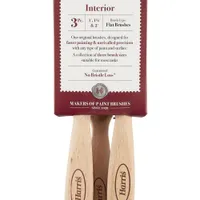What is colour blocking in interior design? How to use this vibrant paint method like an expert
Curious about colour blocking? We spoke to interior design experts to get all the details on this fabulous decor choice

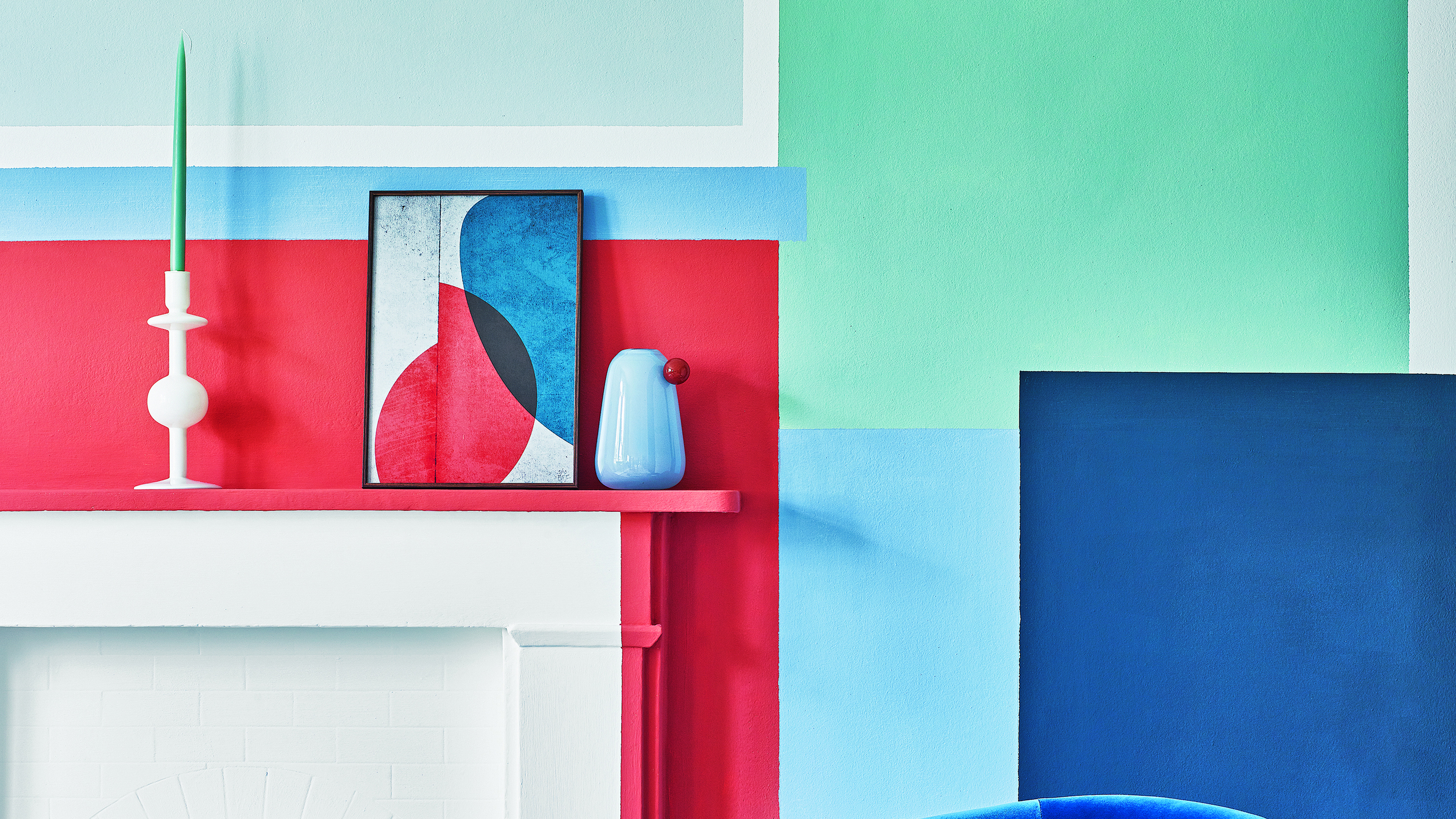
Colour blocking is a tried and trusted design method, well known for its ability to inject vibrancy into interiors. It's often used to breathe life into a space, and it allows us to get creative with our home's colour palettes. But though interior experts are well familiar with colour blocking, you might be wondering, what even is colour blocking in interior design?
Far from a one size fits all approach, colour blocking can be used in a multitude of ways throughout the home. Whether it's livening up living room colour schemes, or transforming a spare bedroom from drab to fab, colour blocking is one of the best tools to have in your interior design skillset.
Thanks to its versatility, colour blocking in interior design can be made to suit everyone. To get into the nitty gritty of what it entails, we spoke to interior design experts about this popular decor method.
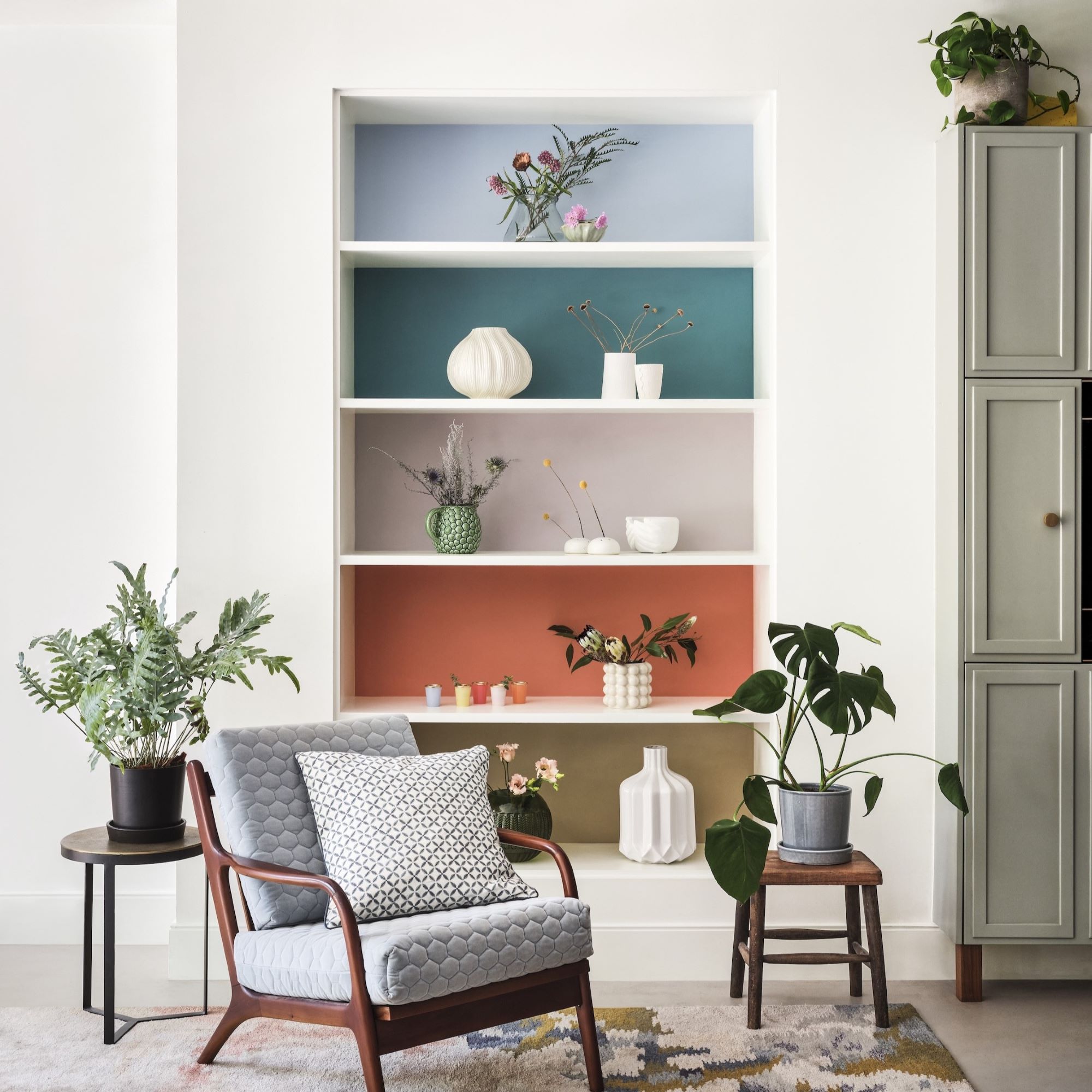
What is colour blocking in interior design?
'Colour blocking can be used to liven up almost any space and escape the boundaries of wallpaper, by using colour and shape to highlight features in your home on a budget,' says Kate Duckworth, Trends & Interior Expert, Swift Direct Blinds.
An interior design concept with no limits or restrictions is music to our ears, but how do we go about colour blocking in our own homes? Here's everything you need to know.

After almost 12 years in corporate merchandising roles for both UK and International brands, Anna Hill relocated to Norfolk to join the family business and learn the ropes, trading in the rat race for a very different way of life! 5 years in, she now heads up the running of the thriving, luxury, British independent paint brand, Fenwick & Tilbrook. The go-to for premium, pigment-rich paints, Fenwick & Tilbrook's extensive palette of colours is available in six finishes, and is made-to-order using only the highest quality ingredients.
What is colour blocking?
Put simply, colour blocking in interior design is combining multiple colours in one area of the home. The separation between the colours is distinct, created through clearly defined lines and solid colour filling, or 'blocking'.
Colour blocking is used to create a visually striking effect, and inject vibrancy into a space. It may be used to liven up a kitchen colour scheme for example, by using a unique combination of colours on the walls, and coordinating furniture to match.
Sign up to our newsletter for style inspiration, real homes, project and garden advice and shopping know-how
'Colour blocking is an easy and effective way to personalise a space,' says Anna Hill, Brand Director and Colour Consultant, Fenwick & Tilbrook. 'It can break up monotony and creates a dynamic focal point in a room, allowing you to showcase your unique style through bold colour choices or more subtle accents.'
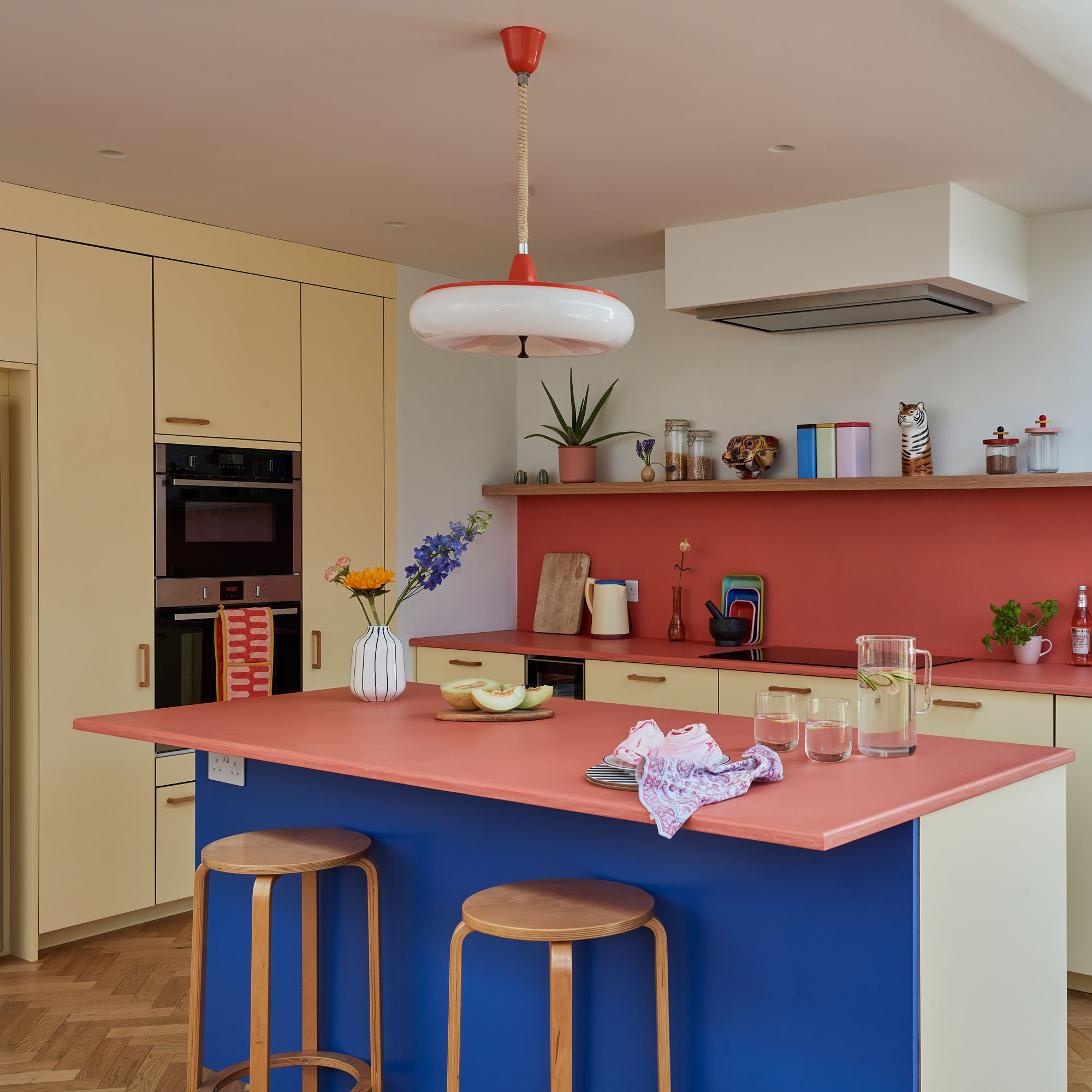
When should you use colour blocking?
Colour blocking isn't restrictive, and it can be used in any room in the house, but you may find that it works best in spaces where you want to create a focal point. 'Colour blocking is great for defining a zone within a larger space, or highlighting specific architectural features,' Anna says.
For example, there might be a bedroom in your house with sloping ceilings. You could use colour blocking on the walls to accentuate this aspect of the room, incorporating it into the design rather than just leaving it as a purely practical element. Bedroom wallpaper ideas would also work for this, but colour blocking gives you flexibility and freedom to create whatever bedroom colour scheme your heart desires.
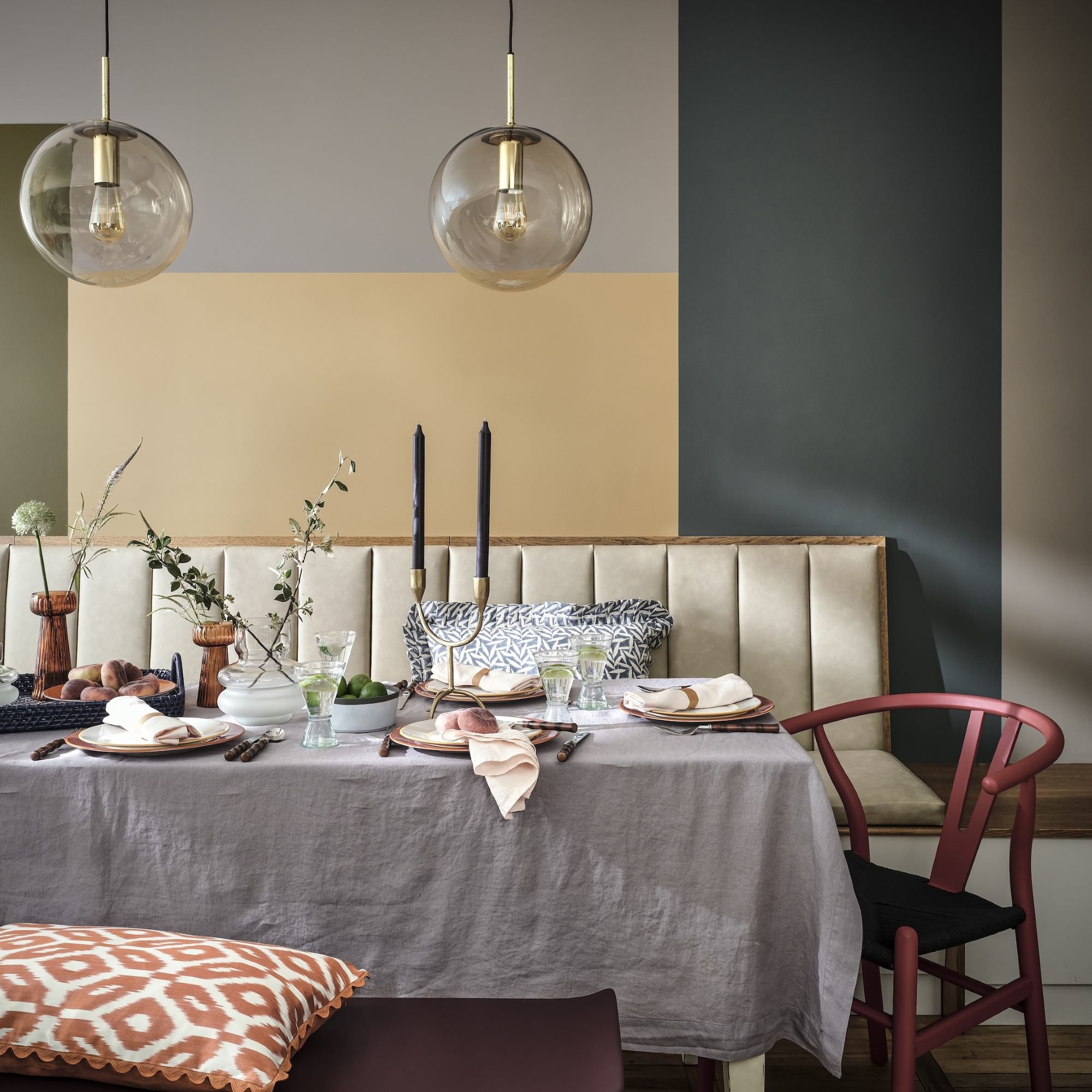
What colours to use for colour blocking
You might be wondering what hues and tones to use for colour blocking in interior design, but part of the beauty of this method is that there aren't really any rules to follow. Play around with different colour combinations by swatching them before you start fully painting walls.
'For guidance, you can use a colour wheel to find complementary tones,' says Kate from Swift Direct Blinds. 'There are no rules as to how many shades you can use but three is the standard recommendation. Play with colour to manipulate the perceived size and shape of your room. Lighter shades open up the space, while darker tones create a cosy, intimate feel.'
You can go bold by using two sharply contrasting colours like red and green, or you can create a softer, more relaxed feel with different shades of the same colour, like blues or pinks. The latter method is a good approach when trying to create a soothing atmosphere, like with calm bedroom ideas.
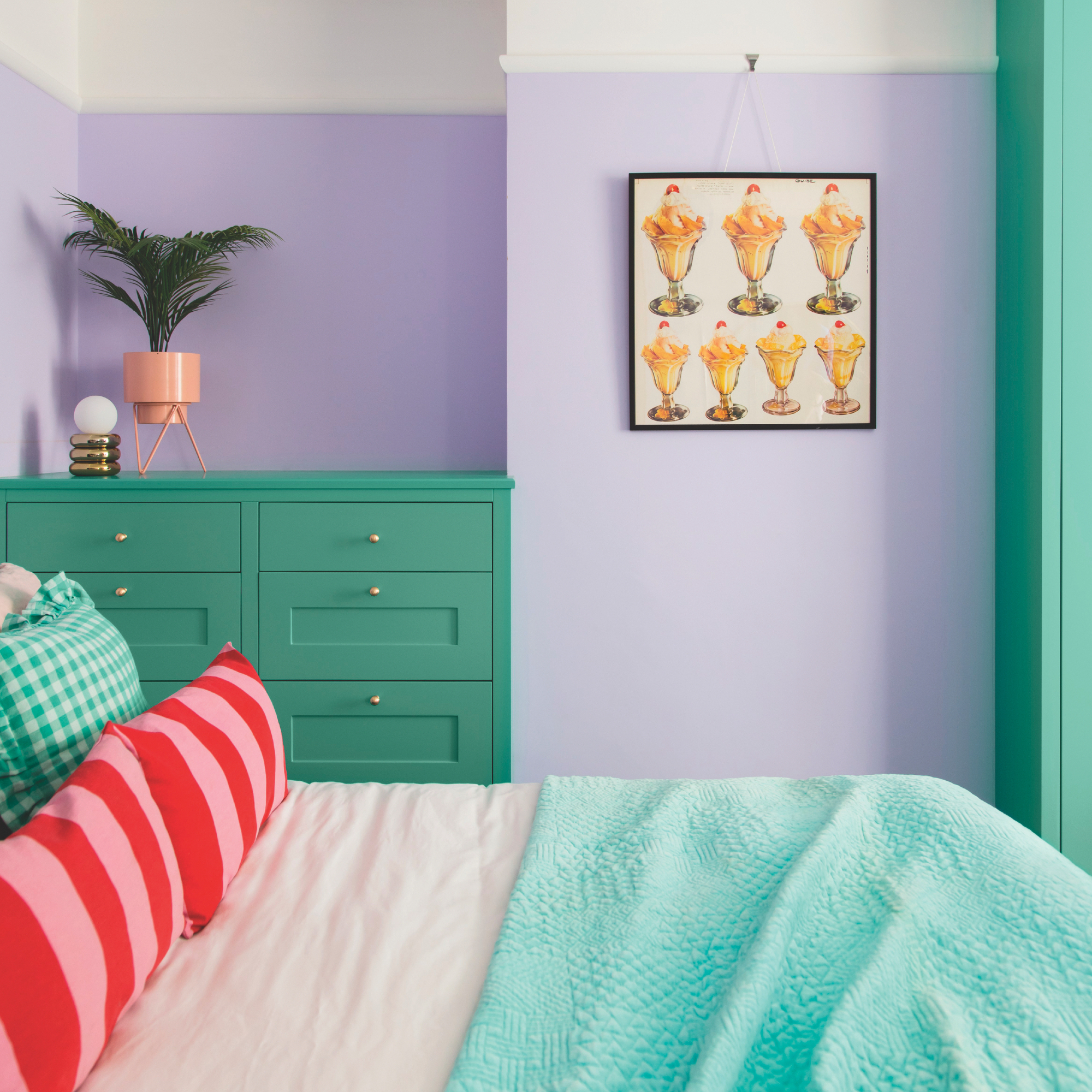
How to do colour blocking
Colour consultant Anna has to put together the following step-by-step guide on how to do colour blocking in interior design. Follow this method for a failproof result:
- First, plan your design - sketch, use online tools or gather inspiration from magazines or websites.
- Choose your colours – select 2 or 3 colours that complement each other, using harmonious tones (those that sit alongside each other on the colour wheel) or complementary colours (opposites on the wheel) for a more dynamic look.
- Prep your surface! Clean your walls to ensure they are free from grease / dust and apply a good quality decorators tape if your design is more angular / geometric. For a mural-style colour blocking, freehand designs can be lightly sketched out with a pencil to help guide you.
- Then, paint! Apply your first colour, letting it dry before moving onto the next colour. Use high-quality paint and a roller or good quality brush for an even appearance. Carefully remove the tape once the paint is touch dry to reveal your masterpiece!
Harris Heritage Fine filament tip Paint brush, Pack of 3, £14 at B&Q
Makers of Paint Brushes since 1928, these Harris Heritage original brushes are designed for ultimate precision, making them perfect for colour blocking. You can create crisp lines and neat edges with these brushes, which will stand the test of time.
You can use colour blocking on a larger scale by painting different colours on adjoining walls, or you could highlight a smaller area by painting a darker colour on the bottom half of a wall, and the top half in a lighter neutral tone. 'This can be cut at any height that suits the size of your room typically between half and three-quarters of the way up the wall,' says Kate from Swift Direct Blinds.
Accentuate your colour blocking further by incorporating other elements of your decor. Coordinate furnishings and accessories with your chosen colours, to emphasise their contrast and create interesting focal points in the space.
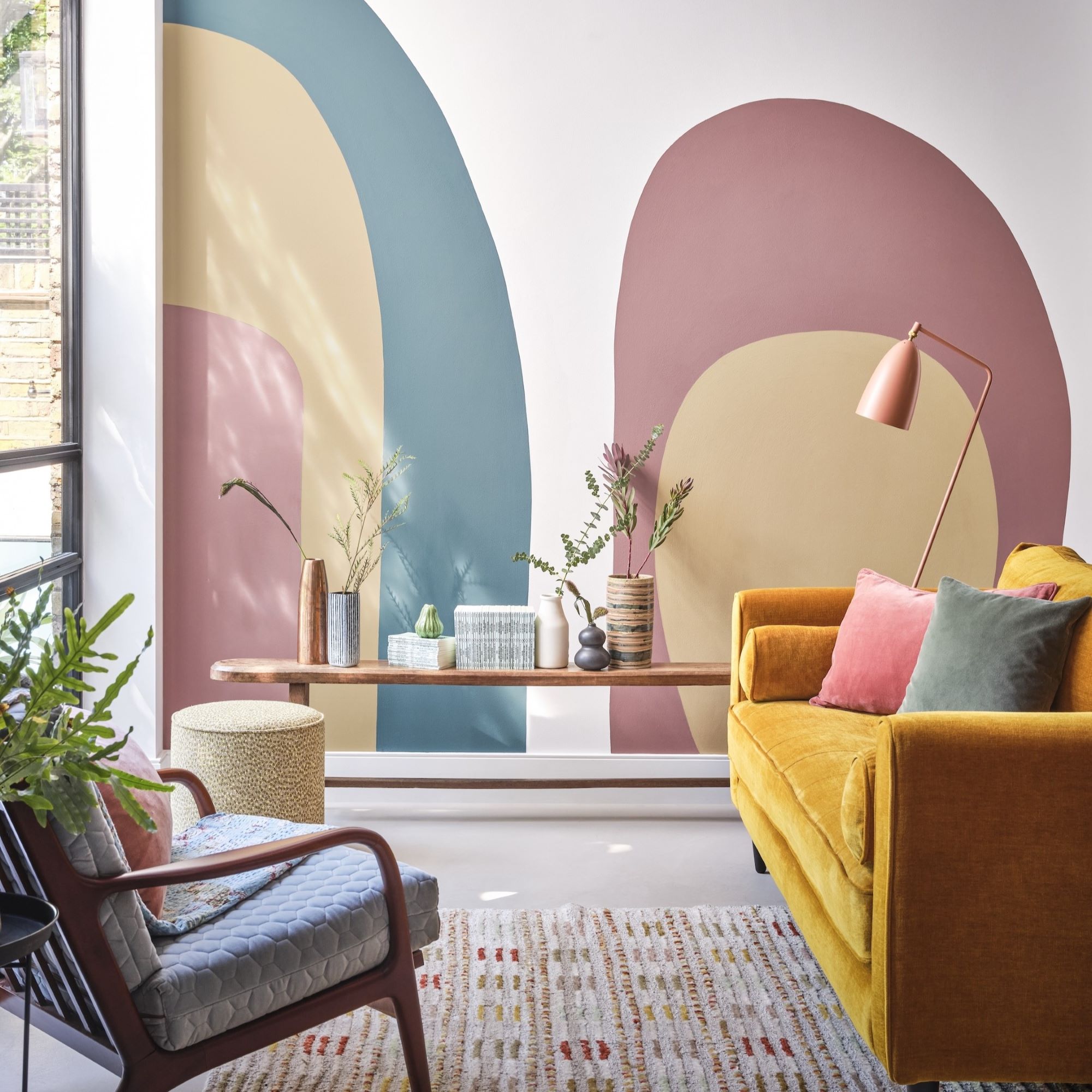
FAQs
What is the concept of colour blocking?
Colour blocking is an interior design concept which involves combining two or more colours in one space. Typically, this is via the colour of the walls, but colour blocking can also be incorporated through furniture and accessories.
Colour blocking is often used to inject personality into a room, and as a design concept, it can allow you to get creative with your interior colour schemes. You can play around with different colour combinations to accentuate features in your home.
'Design combinations to highlight architectural details like fireplaces, alcoves, or archways,' says trends and interior expert Kate Duckworth. 'A colour-blocked accent wall can also define different areas within a room without a need for partitions, creating a dedicated workspace, reading nook, or play area.'
How do you colour block a room?
To colour block a room, focus on a specific area at a time. You can colour block multiple times in the same room, but it's best to focus on one area first, then you can see how this looks before pairing it with other colour blocking combinations.
'To create a split wall effect, decide where you want your block line to fall and paint your base colour for the top tone, then apply masking tape above your line so that everything below is the second colour,' says Kate. 'If you want to be more experimental you can introduce shapes and colours. Soft curves and round edges are in trend for 2024 and can add a real wow factor to rooms with few architectural features.'
'If you are unsure about colour blocking in your space, try it on a small scale before committing to a larger area,' adds Anna from Fenwick & Tilbrook. 'And always consider the existing elements of the room first. Take into account the colours and textures of the furniture, flooring and any other décor to ensure a cohesive finished look.'
Now you know all about colour blocking in interior design, will you be getting creative with colour combinations any time soon?

Katie has been writing freelance since early 2022, specialising in all things homes and gardens, following achieving a Masters in Media and Journalism. She started out writing e-commerce content for several of Future’s interior titles, including Real Homes, Gardeningetc, Livingetc, and Homes and Gardens. Since then she’s been a regular contributor on Ideal Home’s digital team, covering news topics, how-to guides, and product reviews.
